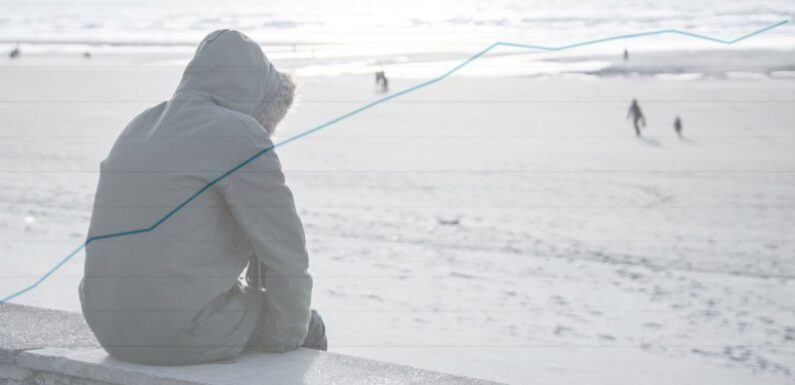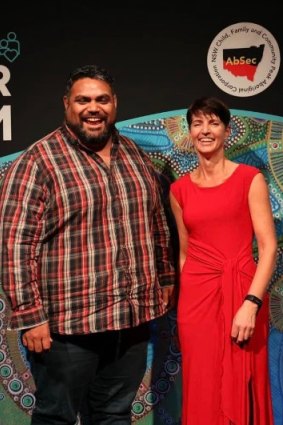
Save articles for later
Add articles to your saved list and come back to them any time.
A scathing report card reveals the NSW government has failed to reform the child protection system and keep First Nations children with their communities and culture as the number of Indigenous children in out-of-home care continues to rise.
In March, Aboriginal children and young people made up 45.1 per cent of those in out-of-home care, compared with 39.8 per cent five years ago.
While there were 1500 fewer non-Indigenous children in out-of-home care in March 2023 compared with the same month in 2019, the number of Indigenous children grew by more than 50.
Of the 118 children housed in emergency accommodation – hotels, motels, caravan parks and short-term rentals – two-thirds were Indigenous, data provided by the department showed.
A report card released by NSW Child, Family and Community Peak Aboriginal Corporation and the Aboriginal Legal Service accused the government of failing to consult Aboriginal communities in implementing the 2019 Family is Culture Review recommendations.
The review was the state’s largest Indigenous-led audit of Aboriginal children in child protection and found that the system was actively causing harm.
Chief executive of the NSW/ACT Aboriginal Legal Service Karly Warner said the report card showed a “continuing disappointing trend” with previous report cards, the previous government, and the current government.
She was particularly concerned about delays in implementing the statewide rollout of the 2018 Aboriginal Case Management Policy, which supports families and communities to overcome barriers such as poverty, intergenerational trauma and disadvantage and keep children with or return them to family.
She also urged the government to set a start date to implement the Family is Culture Bill, which passed last year, and includes a legislative requirement to make active efforts to keep Indigenous children at home with their parents.
Minister for Families and Communities Kate Washington with AbSec CEO John Leha.
“We expected more in terms of proclaiming a piece of legislation that has actually passed,” Warner said. “All of these kinds of interactions are contributing to irrevocable damage to the very children that the out-of-home care system claims to protect, especially Aboriginal kids.”
There were 272 caseworkers who identified as Aboriginal or Torres Strait Islander as of June 30, making up just 12 per cent of the workforce.
Warner said she was equally disappointed with the latest budget announcements: “It did not reflect a substantial redirection of funding into early intervention or family preservation that is required to effect real change for families.”
The 2023-24 budget allocated $1.5 billion to existing NSW closing-the-gap policies, including $375.5 million for the Department of Communities and Justice to fund early intervention programs, Aboriginal-led commissioning and child and family support programs. However, Warner said more funding needed to be directed to Aboriginal Community-Controlled Organisations.
Indigenous children made up almost half of all children who had been re-reported to be at risk of significant harm (RoSH), meaning there is sufficient concern to warrant a response by a statutory authority regardless of the family’s consent, multiple times in the span of a year. This means a caseworker has investigated the claim and closed it, only for the child to be reported again within 12 months.
Lead of the Indigenous child protection hub at the University of Technology Sydney Dr Paul Gray said the current one-size-fits-all approach was leaving Aboriginal and Torres Strait Islander families behind.
“We are missing a genuine commitment to adequately investing in Aboriginal community-based solutions, that are tailored to our kids, our families, and reflect our perspectives and needs,” he said.
Gray added the impact of a child disconnected from their identity “echoed down generations” and had life-long implications.
“We know how important connection and identity is for the life-long wellbeing of children and young people and their families. It’s really important that we have a system that values that and guarantees every child their identity and their cultural rights. And unfortunately, we don’t see that in the current system,” Gray said.
Minister for Families and Communities Kate Washington acknowledged the child protection system was failing Aboriginal children and families.
“We can and must do better,” she said.
Washington said one of her first actions was to convene a forum with 100 Aboriginal stakeholders, leaders, and community representatives to discuss the desperately needed reform to address the over-representation of Aboriginal children in the child protection system.
“I’m committed to working in genuine partnership with Aboriginal communities to reform the broken system and keep all children safe, healthy and well. One thing is for certain, unless we work together, we won’t turn the system around,” she said.
The state government has also committed to a First Nations budget model that will give impact statements to future closing-the-gap spending.
The Morning Edition newsletter is our guide to the day’s most important and interesting stories, analysis and insights. Sign up here.
Most Viewed in National
From our partners
Source: Read Full Article
